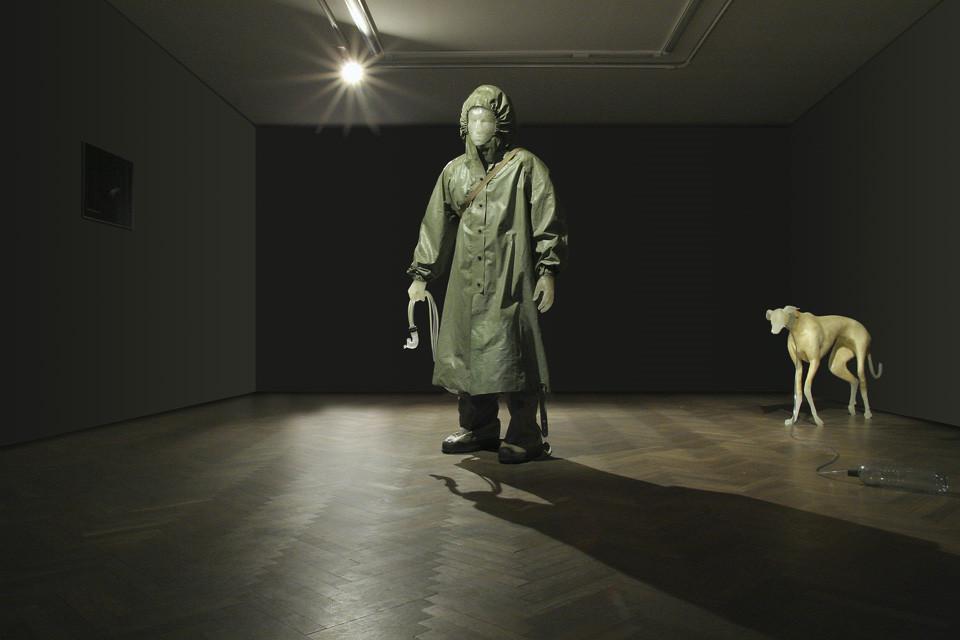Kuba Bąkowski
A Boy and His Dog
Kuba Bąkowski
A Boy and His Dog, 2006, sculpture (epoxy resin, styrofoam, military protective suit, plastic bottle, plastic pipes)
Collection II of the Arsenal Gallery in Białystok. Work purchased by the Podlaskie Association for the Promotion of Fine Arts

A Boy and His Dog, a sculpture installation by Kuba Bąkowski, is usually displayed in a dimly lit space. The sculptures need an empty space and a spotlight just barely revealing them in the dark. Their potential can only be fully realized with the illusion that there is absolutely nothing in the vicinity. Emptiness and darkness are the proper setting for the two effete figures: the skinny transparent dog, and the boy with a see-through body, dressed in a protective olive green rubber cloak. Both are equipped with containers and plastic pipes looking somewhat like oxygen tanks for extreme conditions.
Bąkowski arranges the scenario of all-pervasive emptiness and life after the end of the world by reaching for popular themes from works of science fiction or dystopian literary or film narratives. Visions of a global catastrophe and the entailing doom evoke tales of life after the apocalypse. They are a very valid part of the collective imagination. Popular images of the end feed on prophesied visions of the end of the world – the Apocalypse of St John, the predictions of Nostradamus or the teachings of Pastor Russell (Jehovah’s Witnesses) – which are especially effective at turning points in history.
The title of Bąkowski’s work incidentally refers to the short story by Harlan Ellison A Boy and His Dog (1969), as well as the film adaptation of the piece directed by L.Q. Jones (1975)*. In both cases, the year shown after the cataclysm is 2024. The plot is set on a ravaged planet after yet another nuclear war, and the boy with his dog is one of the few survivors roaming the smouldering remains of what used to be a civilization. The characters from both Bąkowski’s installation and the story by Ellison belong to the canon of how the end of the world is commonly imagined. Both artists show life after the disaster by means of patterns and images elaborated through a pop culture interpretation of the apocalypse, thus proving that the actual moment of the end cannot be cognisable and that portrayals of what it might be like are seriously limited.
Izabela Kopania
* The titles are the same by mere coincidence, neither the film nor the short story served as direct inspiration for Bąkowski.

PLAN YOUR VISIT
Opening times:
Thuesday – Sunday
10:00-18:00
Last admission
to exhibition is at:
17.30